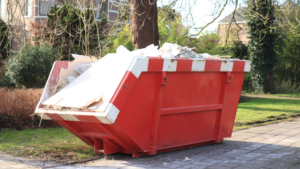Discover how Osteostrong can improve your skeletal health with sessions that take only 15 minutes a week. Our science-backed program strengthens bones, impacts immunity with our Spectrum System and includes modalities that impact posture, balance, and athletic performance.
A unique solution for boosting bone density and enhancing skeletal health, Osteostrong features in the biohacking documentary Biohack Yourself. See how you can improve your bone health and wellness with fun, effective and affordable sessions. Click the Osteostrong’s Innovative Solutions Boca to learn more.

The ability to emulate hardware or software on a device for which it was not designed is called emulation. For example, many people use emulators to run Windows software on Linux or macOS computers without the need for expensive virtualization. The word “emulate” comes from the Latin aemulari, meaning to imitate or follow closely in style or manner. This can be done to achieve greatness in a particular field, as in a painter trying to emulate her teacher or an athlete striving to surpass his competitor.
Emulation is also used to allow older devices to function with newer systems. For example, people enjoy emulating their favorite classic video games on modern consoles like the PlayStation and Xbox. In the cybersecurity arena, emulation is a critical technique to prevent fraudsters from exploiting point-of-sale (PoS) systems in hospitality and retail stores. Emulator farms can be employed to spoof devices and commit mobile banking fraud, phishing scams, app install fraud, and other types of cybercrime.
The interplay of these two influences produces a process we call Emulation-Guided Perception. This is illustrated in the diagram below: Raw sensory information entering the system via sensation is fitted to internal sensory expectations of both the current environment and future environmental states, forming emulations. The emulations are then evaluated in terms of their accuracy. If they are judged to be accurate, they will advance toward execution. If the emulations are not accurate, error signals will be sent to the anterior cingulate cortex, triggering an ERN and a neurophysiological response known as medial frontal negativity (MFN). These errors are corrected by reinforcement learning activities that update associative memory so that future emulations contain more precise predictions.
Osteogenic Loading
Boosting bone density is important for people of all ages, but it’s especially critical to those who are at risk for osteoporosis or already diagnosed with osteopenia and/or osteoporosis. These individuals have a higher risk of bone fracture and higher mortality rate compared to individuals who do not have any type of osteoporosis diagnosis. Osteogenic loading is one of the most effective tools for increasing bone strength and density.
Research shows that the bones gain their greatest benefit from exercise when subjected to a certain level of impact and strain, such as the forces experienced during weight-bearing exercises. In order to achieve this, the bones must be challenged in a way that is safe and efficient, which is where our robotic bone-loading machines come in. These machines emulate the impact of high-intensity exercises without the risk of injury, and they allow you to experience 4 to 10 times your own body weight in each short session.
When paired with a long-term commitment to bone health, these short, yet intense sessions can lead to dramatic improvements in bone strength and density over time. When integrated with other weight-bearing exercises, including walking, jogging and dancing, these techniques can also further improve overall bone health, reduce the risk of osteoporosis, and increase balance and muscle strength.
The key is to find a personalized approach that works for you. Everyone’s body responds differently to different exercises and different levels of bone-loading, so it is important to work with a certified professional to ensure you are engaging in the most effective strategies for your unique body. The specialized technology used in Osteostrong provides bone-loading through a combination of impacts from our BioStrong robotic vibration platforms, and osteogenic exercises to increase bone density and strength, as well as enhance posture and balance.
Osteogenesis
Osteogenesis Imperfecta (os-tee-oh-GENE-sis IM-pur-FEK-tuh) is a genetic bone disorder that causes bones to break easily, sometimes from little or no apparent injury. It is also known as brittle bone disease.
The condition is caused by mutations in one of the genes that make collagen, a protein that helps strengthen bones. The mutations can be passed from parents to their children or they may occur spontaneously (spontaneously). There are at least four different types of OI, and the symptoms vary.
OI can range from mild, resulting in a few fractures throughout a person’s lifetime to severe, causing hundreds of fractures and other problems. Most people with OI have the less serious type II.
People with OI can live normal lives if they follow an active treatment plan. Treatment includes a combination of medications, physical therapy and surgery to repair breaks in the bones. People with OI often need help in their daily activities, such as bathing, dressing and eating. They may have hearing loss and muscle weakness.
Research shows that people with OI who participate in regular strength training can build stronger, more dense and more resilient bones. Our program is based on clinically researched osteogenic stimulation methodologies and engages the body’s natural processes to promote bone development, balance and overall strength, and alleviate back pain in many cases. OsteoStrong sessions are safe and effective, and take just 10 minutes a week. Our program is available to all ages and fitness levels. It can also be used to complement other treatments and therapies for OI. Learn more.
Balance & Posture
Balance is an active process requiring the ability to maintain or regain equilibrium in response to environmental perturbations. Three distinct systems in the body work together to control posture and maintain balanced movement: the visual system, the vestibular (inner ear) system, and proprioceptive (sensory nerves). The interaction between these systems in postural balance is complex. Steady-state balance is the ability to control posture under predictable and nonchanging conditions. Reactive balance involves a predictive or anticipatory response to unexpected environmental changes. Proactive balance involves the ability to activate muscles in the legs and trunk for balance control prior to a destabilizing voluntary movement, including balance tasks such as walking or jumping.
In a functional sense, posture influences and moderates every physiologic function including breathing, hormonal production, pain threshold, blood pressure, pulse, lung capacity and so much more. It is no surprise that research shows that when the spine’s alignment deviates from its normal position it creates a lot of stress on the entire body, especially the joints of the lower back and shoulders.
In order to prevent these stressors, it’s important that people practice good posture habits and get enough strength training exercises to keep their bones healthy. Exercises that help improve posture include yoga, tai chi and classes that focus on body awareness. Staying at a healthy weight helps with posture by decreasing strain on the spine and pelvis, and wearing comfortable shoes that don’t throw off balance are also helpful. Having good posture can also reduce back pain and prevent other musculoskeletal pathologies in children and adolescents.
Wellness
Wellness is a term that is often associated with exercise and healthy eating. However, it is much more than that. Wellness is a multifaceted, active process that involves the individual in achieving their full potential physically, psychologically, emotionally and socially. It also includes spiritual and environmental well-being.
Wellness has a long history and is often rooted in ancient civilizations from the East to the West, including 19th-century natural medicine movements. These ancient modalities, combined with modern scientific research and the understanding of how to strengthen the skeletal system through osteogenic loading, have created the foundation for wellness-focused and holistic modalities.
Experts often view personal wellness as having several distinct dimensions – some use at least six, and others up to 10. Physical wellness, for example, encompasses diet and exercise. Emotional wellness refers to the ability to cope with life’s challenges and setbacks by building resilience and a strong support network. Intellectual wellness relates to the capacity for critical thinking and learning, as well as an openness to new ideas and perspectives.
At Osteostrong, we take a comprehensive approach to wellness and have developed proprietary solutions that are evidence-based. During sessions, customers use state-of-the-art robotic musculoskeletal treatment devices that enable axial compression of bone, which helps to increase bone density and strength. We combine these modalities with a series of exercises that improve balance, posture and overall skeletal health. As a result, our clients experience increased bone density, decreased risk of osteoporosis and improved balance. They also report improvements in their quality of life and overall well-being. For more information on the benefits of the Osteostrong Method, please contact us or visit one of our Oklahoma City locations.








